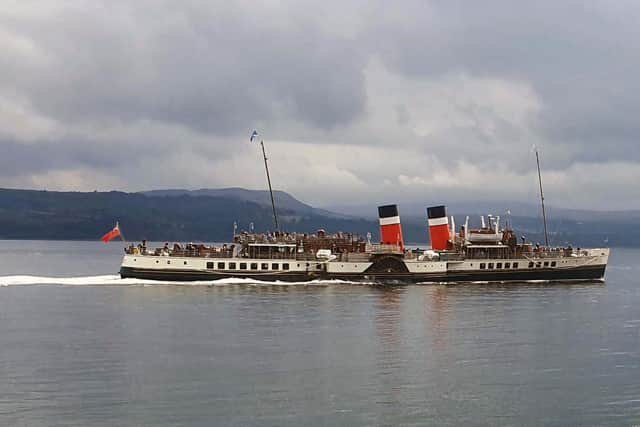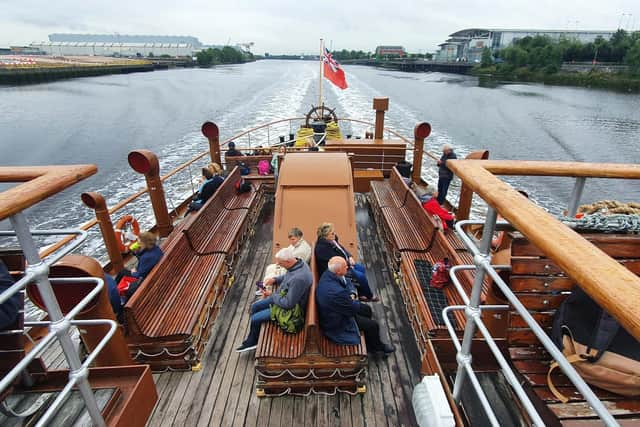Waverley paddle steamer offers unique travel experience into the past – Alastair Dalton
To previous generations, the Clyde was a familiar leisure gateway, transporting them on summer jaunts from Glasgow to seaside towns or on a cruise “doon the watter”.
But for many younger people, the river has become an altogether more static part of the landscape.
Advertisement
Hide AdAdvertisement
Hide AdLargely empty of traffic, access to the river today is largely limited to the view from its banks. There are now few opportunities to take to the water, and the nearest you can get is by crossing a bridge over it.


That’s what makes the paddle steamer Waverley so special – in providing both passage onto the river and an enduring link to the past.
For 75 years, the ship has taken daytrippers down the Firth of Clyde in every summer bar just two, initially under the ownership of nationalised rail and ferry operators including CalMac’s predecessor. Since 1974, she has been owned by the Paddle Steamer Preservation Society and has carried more than six million passengers . It’s a remarkable feat. Living history.
Waverley is no mere museum piece, dusted off for occasional heritage cruises.


The steamer is continuing to perform the role she has always done, and unlike virtually any other form of transport, she enables passengers to travel almost exactly as their grandparents did shortly after the Second World War.
However, it’s been a constant battle to keep the ship sailing, not least with the Covid pandemic significantly reducing sailings and the number of people carried for two years.
In the latest challenges, revealed by The Scotsman on Saturday, rocketing fuel bills threaten to blow a £200,000 hole in Waverley’s finances – cash that’s vital for her annual winter overhaul.
However, the ship has a huge number of fiercely proud and loyal fans, stretching as far as London and the south coast, to where she has sailed since the late 1970s.
Advertisement
Hide AdAdvertisement
Hide AdIn fact, I’m told that donors in the Thames area contributed the most to Waverley’s major 2019 boiler replacement appeal.
The ship’s operators, Waverley Excursions, have told me they will be “pushing hard” to maximise revenue during her south of England sailing programme over the next five weeks, starting on Friday.
They hope to build further on a new daily record for advance sales which was set last week.
While the payroll for the company’s 35 staff, including 25 crew, has to be funded, volunteers are relied on over the winter for some labour-intensive maintenance tasks such as varnishing, sanding and painting the vessel.
Regular donations by Friends of Waverley bring in £80,000 a year while a volunteer has raised £12,000 in two months just by selling raffle tickets on board.
Another knits hats to sell in the souvenir shop, where spending per person has doubled since 2018 and takings have reached £110,000 this year.
But simply buying a ticket to enjoy that the unique Waverley experience also helps out – and there are two last opportunities for that on the Clyde this year, when the ship returns for autumn cruises on October 15-16.
Comments
Want to join the conversation? Please or to comment on this article.
